OPIS
Podziemne budowle miast zawsze cieszyły się ogromnym zainteresowaniem, urzekały tajemniczością i wzbudzały nadzieje na odnalezienie skarbów. Podziemia Rzymu mogą zaspokoić wszystkie te potrzeby umysłu lepiej niż jakiekolwiek inne miasto na świecie ponieważ tamtejsze „lochy” są stosunkowo dobrze zachowane oraz znajduje się w nich relatywnie dużo różnorodnych zabytków antycznych. Celem książki, którą oddajemy do rąk czytelnika jest opis i interpretacja podziemnych budowli rzymskich, wyjaśnienie czym były i czemu służyły, a także kiedy i w jaki sposób zostały zbudowane oraz dlaczego są tak liczne, jak można je sklasyfikować i co wnoszą do naszej wiedzy o architekturze i sztuce Rzymu. Omówione są zarówno kanały, cysterny i inne pomieszczenia podziemne czysto utylitarne, jak i konstrukcje reprezentacyjne w postaci kryptoportyków, chroniące w lecie przed upałami, a w zimie przed deszczem i chłodem. Ponadto bohaterami książki są również kultowe miejsca spotkań Rzymian, przede wszystkim wyznawców boga Mitry, czyli mitrea. Wreszcie omówiono także podziemne grobowce, w tym oczywiście katakumby, nie tylko chrześcijańskie, choć najobszerniej opracowane, ale też pogańskie i żydowskie.
Subterranean structures underneath cities have always provoked an avid interest, captivated with mysteriousness and enticed with hopes of finding treasure. Subterranean Rome can satisfy all of these states of mind better than any other city in the world, as the Roman “dungeons” are relatively well preserved, contain relatively abundant monuments of Antiquity and offer their wide variety. This book aims to present a description and interpretation of the subterranean structures of Rome, explaining what they were and what purpose they served, when and how they were built, why they are so numerous, how they can be classified and what they contribute to our knowledge of Roman architecture and art. Are discussed channels, water tanks and other underground spaces purely utilitarian as well as representational structures as cryptoporticus. indispensable to protect against heat in summer and in winter against rain and cold. The heroes of the book are also secred meeting places of the Romans, especially the mitrea. Finally, there are also discussed underground tombs, obviously the catacombs, not only Christian, most extensively developed, but also pagan and Jewish.




















